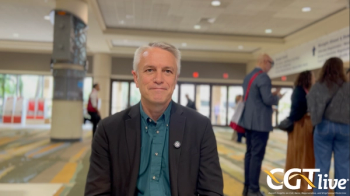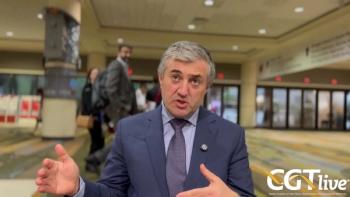
Dilsher Dhoot, MD, On Reducing Treatment Burden in Diabetic Retinopathy With Gene Therapy
The adjunct clinical assistant professor, ophthalmology, Keck School of Medicine, University of Southern California discussed unmet needs with the current treatment landscape for DR.
“The majority of patients that have diabetic retinopathy without vision threatening complications are not treated with anti-VEGF in the real world, and this is really because of the unsustainable treatment burden of frequent injections in the eye. So, gene therapy allows for a one-time in-office injection, that can potentially provide a long-lasting improvement in diabetic retinopathy severity, and thereby reduce the risk of vision threatening complications.”
A one-time suprachoroidal injection of RGX-314 gene therapy was well-tolerated and yielded improvements in diabetic retinopathy severity scale (DRSS) scores in patients with DR treated in the phase 2 ALTITUDE trial (NCT04567550). Updated data from the study were presented at the American Society of Retina Specialists (ASRS) 2023 Annual Meeting, held July 29-August 1 in Seattle, Washington, by Dilsher S. Dhoot, MD, ophthalmologist, California Retina Consultants, and adjunct clinical assistant professor, ophthalmology, Keck School of Medicine, University of Southern California.
The data included no serious adverse events related to RGX-314, stable best-corrected visual acuity through 6 months, and improvements in DRSS, including a 2-step improvement in 20% of treated participants compared to 10% of control participants. Data from a new cohort using an additional prophylactic steroid eye drop regimen also demonstrated no cases of intraocular inflammation.
CGTLive spoke with Dhoot to learn more about the unmet needs with the current treatment landscape of DR and how RGX-314 gene therapy may potentially address these. He stressed the issue of real-world compliance with anti-vascular endothelial growth factor injections in patients without serious vision-threatening complications due to the treatment burden of regular injections to the eye. He suggested that a one-time, durable gene therapy treatment may be invaluable to these patients by reducing treatment burden, DR severity, and the risk of developing vision-threatening complications.
REFERENCE
Dhoot DS. Suprachoroidal delivery of investigational ABBV-RGX-314 for diabetic retinopathy: The phase II ALTITUDE® study. Presented at: ASRS 2023 Annual Meeting, July 28-August 1; Seattle, Washington.
Newsletter
Stay at the forefront of cutting-edge science with CGT—your direct line to expert insights, breakthrough data, and real-time coverage of the latest advancements in cell and gene therapy.



































